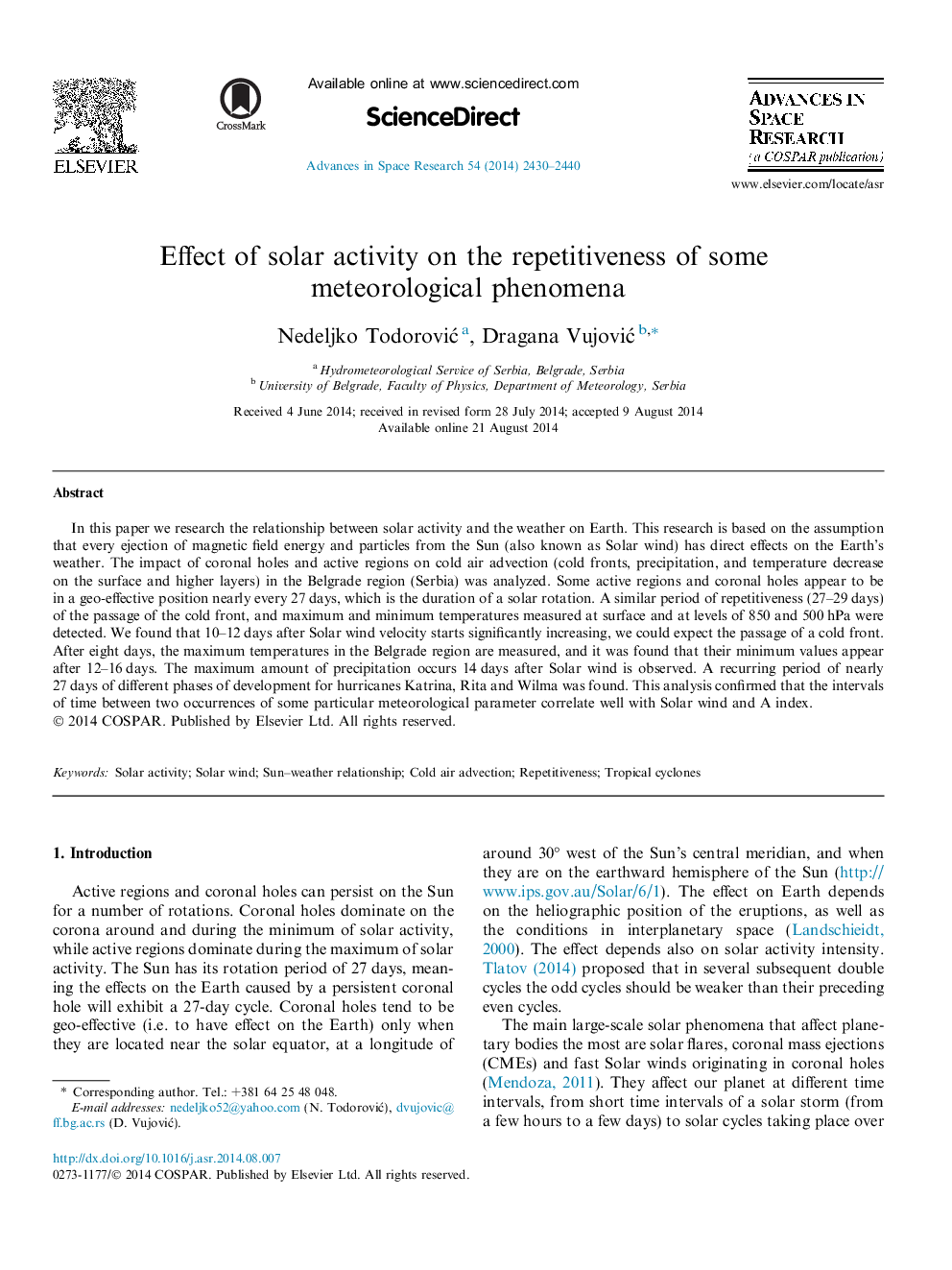| Article ID | Journal | Published Year | Pages | File Type |
|---|---|---|---|---|
| 10694282 | Advances in Space Research | 2014 | 11 Pages |
Abstract
In this paper we research the relationship between solar activity and the weather on Earth. This research is based on the assumption that every ejection of magnetic field energy and particles from the Sun (also known as Solar wind) has direct effects on the Earth's weather. The impact of coronal holes and active regions on cold air advection (cold fronts, precipitation, and temperature decrease on the surface and higher layers) in the Belgrade region (Serbia) was analyzed. Some active regions and coronal holes appear to be in a geo-effective position nearly every 27Â days, which is the duration of a solar rotation. A similar period of repetitiveness (27-29Â days) of the passage of the cold front, and maximum and minimum temperatures measured at surface and at levels of 850 and 500Â hPa were detected. We found that 10-12Â days after Solar wind velocity starts significantly increasing, we could expect the passage of a cold front. After eight days, the maximum temperatures in the Belgrade region are measured, and it was found that their minimum values appear after 12-16Â days. The maximum amount of precipitation occurs 14Â days after Solar wind is observed. A recurring period of nearly 27Â days of different phases of development for hurricanes Katrina, Rita and Wilma was found. This analysis confirmed that the intervals of time between two occurrences of some particular meteorological parameter correlate well with Solar wind and A index.
Related Topics
Physical Sciences and Engineering
Earth and Planetary Sciences
Space and Planetary Science
Authors
Nedeljko TodoroviÄ, Dragana VujoviÄ,
